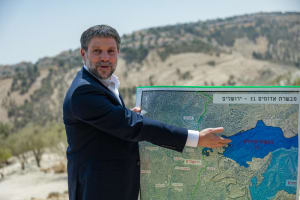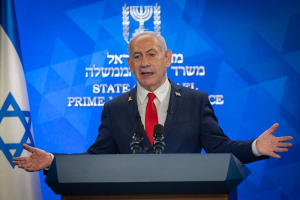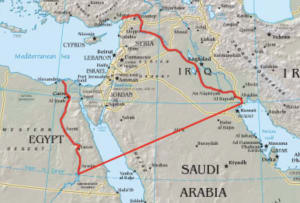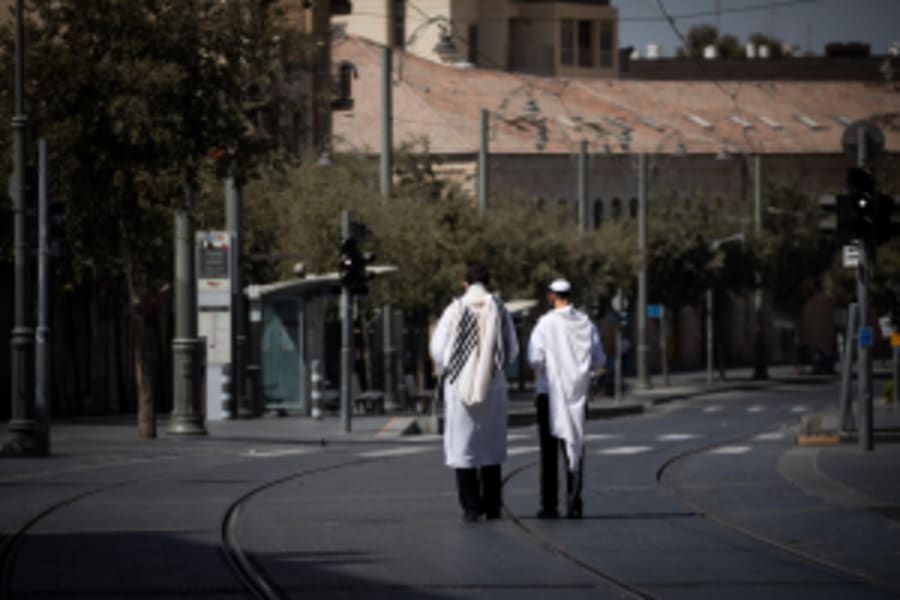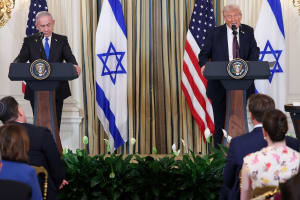What is ‘Greater Israel’ and why were so many offended by Netanyahu’s apparent support for the idea?
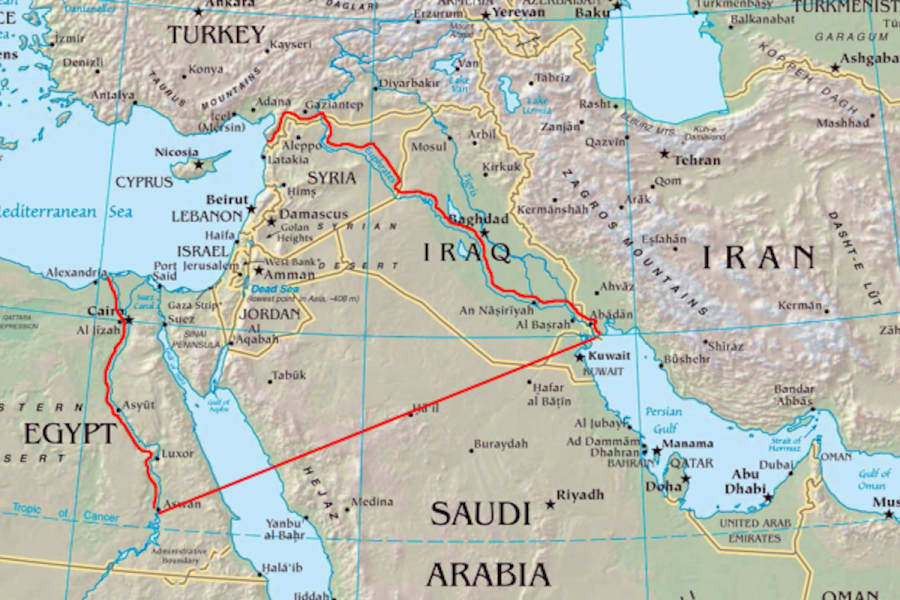
Since the start of the Oct. 7, 2023, Gaza war – and even before – anti-Zionists have argued that Israel deliberately provokes its neighbors to pursue an expansionist, irredentist vision of "Greater Israel."
What exactly is “Greater Israel,” and does Prime Minister Benjamin Netanyahu’s apparent support for the idea indicate that he is seeking to dramatically expand the borders of Israel?
A history of the “Greater Israel” idea
“Greater Israel” is a term that has been used in many different ways over the years, but it is often used to describe the ideal borders of the land of Israel.
The term itself derives from differences in the biblical texts in which the borders of the “Promised Land” are delineated.
More specifically, it comes from how some people interpret the promises God made to Abram in Genesis 15:18-21, where God says, “To your seed I give this land, from the river of Egypt to the great river, the river Euphrates, [the land] of the Kenites, the Kenizites, the Kadmonites, and the Hittites, the Perizzites, the Rephaim, the Amorites, the Canaanites, the Girgashites, and the Jebusites.”
While the description of the land based on the rivers, appears to be very large, as many scholars interpret the “river of Egypt” to be the Nile, and stretching all the way to Euphrates, the boundaries are not clearly delineated, and the mentioning of the people groups refers almost exclusively to those living within the borders of the modern State of Israel, along with small parts of the modern states of Jordan and Lebanon.
Some Bible scholars debate whether the river of Egypt is the Nile, which does have a proper name in the Bible, and instead believe the reference is to Wadi al-Arish (a wadi is a small river that only has water during the rainy season) that may have formed the border with Egypt in the southeastern part of the Negev in Biblical times.
The boundaries described by God in Numbers 34 are different and much closer to the modern territory of Israel. A good idea of the possible borders in the description in Numbers aligned with statements in Ezekiel 47, can be found here.
In the modern period, since the development of political Zionism, as opposed to the continual longing of the Jewish people to return to their homeland, the issue of exact borders has become a topic of great dispute.
On July 24, 1922, the League of Nations granted the Mandate for Palestine to Great Britain, with the specific goal of developing “a national home for the Jewish people” while also clearly stating that “nothing should be done which might prejudice the civil and religious rights of existing nonJewish communities in Palestine.”
That mandate included the territory of the modern State of Israel, along with the modern state of Jordan. However, shortly afterwards, the League of Nations, along with Great Britain decided that the mandate did not include Jewish settlement east of the Jordan River, which eventually became the Hashemite Kingdom of Jordan.
Later, Great Britain reneged on its promises to the Jewish settlement in Mandatory Palestine, and to the broader Jewish community, by restricting Jewish immigration to the territory.
After the establishment of the United Nations, that body adopted a resolution to further partition what was left of Mandatory Palestine, excluding the territory of Jordan, which was to become two homelands, one for the Jews and the other for the Arabs.
The Jewish residents of Mandatory Palestine accepted the partition, and within a short time declared the modern state of Israel. The Arabs did not accept it and instead partnered with the surrounding Arab nations in the hope of conquering the small Jewish territory and building a pan-Arab confederacy.
Since that time, the idea of “Greater Israel” for many Israelis has meant the full control of the State of Israel, including Judea and Samaria, and the Golan Heights territory captured by Israel during the Six Day War.
In the more recent period, some among the Religious Zionist camp have adopted a maximalist interpretation of Genesis 15:18-21, believing that it refers to all the territory between the Nile and the Euphrates rivers. While the number of Israelis supporting this idea is relatively small, it does include some notable figures, such as Finance Minister Bezalel Smotrich, and Rabbi Israel Ariel, founder of the Temple Institute.
Other Israelis understand the concept of “Greater Israel” to refer not to the area of exclusive Jewish political control, but the area of Israeli influence. In this view, the State of Israel would occupy the current boundaries, possibly including the territories of Judea and Samaria, but it would constitute the dominant political and military influence over the areas between Egypt and Iraq.
Greater Israel Memes?
Interestingly, due to the lack of support for the “Greater Israel” idea among most Israelis, the outrage over the idea of an irredentist Israeli expansion has led to some Israelis and Israel supporters sharing memes online mocking the fear.
Here is proof our goal is to conquer all of ancient Mesopotamia.
— The Mossad: Satirical and Awesome (@TheMossadIL) December 8, 2024
One picture of some unidentified dude's arm wearing a patch he bought from Temu.
He's still thinking small. Alexander the Great did so much more.
From the arctic to the equator Israel will be greater. pic.twitter.com/6bQmGy7d0p
behold:
— Adin - عدین - עדין (@AdinHaykin1) December 11, 2024
Greater Israel https://t.co/gdn2zJasmR pic.twitter.com/sm8r9yRvxS
All the antisemites are talking about 'Greater Israel', but nobody ever talks about Greatest Israel. pic.twitter.com/MY79SH3zwD
— The Mossad: Satirical and Awesome (@TheMossadIL) March 7, 2025
The Modern Scandal
The outrage which came from Prime Minister Netanyahu’s interview on the Hebrew i24 News program last week, in which he was asked, “Do you connect to this vision of the ‘Complete Israel?’”
By responding "Very much," Netanyahu seemed to confirm the fears of anti-Zionists: that the unstated goal of Israel’s conflicts – with the Palestinians, Hezbollah in Lebanon, and various groups in Syria, from the Assad regime to the Jolani regime – is a desire to expand Israel’s borders, encompassing all the territory from the Nile to the Euphrates.
אתה מתחבר לחזון ארץ ישראל השלמה?
— עמיאל ירחי (@amiel_y) August 12, 2025
נתניהו: מאוד pic.twitter.com/n0STPVHtrG
Greater Israel or a region of Israeli influence?
However, Netanyahu’s own political actions and decisions in his 16 years as prime minister, should cause some hesitancy from accepting that idea. He has been given plenty of opportunities to declare full Israeli sovereignty over the territories of Judea and Samaria, but has not done so, even as recently as Sunday, when he was specifically asked to do so by many of his coalition partners.
Many Israelis would have even supported such a decision, yet Netanyahu has not done so. Not only that, but Israel has regularly taken territory from its Arab neighbors in wars of aggression which it did not initiate, only to hand back some or all of the territory later.
It seems more reasonable to understand that Netanyahu, the consummate politician, was answering the question in a way that would give him the most amount of political support at home, while allowing him to redefine his intentions to the outraged leaders of nations.
Support for this is seen in that while Israel took control of the Syrian side of Mt. Hermon, it did not take control of the territory around, including Suwayda, where many Druze have begun asking Netanyahu to annex their territory. Instead, Israel is content to exercise military supremacy in that area, without exercising political control.
This strategy appears to explain what Netanyahu means by “Greater Israel,” the territory in which Israel is the dominant influence. Politically, this idea makes more sense than attempting to exert Israeli political control over areas which would find such direct influence repugnant. This situation also allows Israel to continue, as it has for years, to aid the government of Jordan, despite the high levels of hatred and mistrust among the Jordanian population towards Israel.
It would also explain what Israel hopes to achieve in its relations with Lebanon, if Hezbollah were to be disarmed. Israel has no desire to rule over the various groups of Sunni and Shia Muslims living in southern Lebanon, whose hatred for each other is almost as strong as their hatred for Israel.
However, Israel would like to be the dominant military and political force that the Lebanese government willingly aligns itself with, and with which it makes economic deals. This understanding clearly appears to align with Netanyahu’s past statements about a Middle Eastern alliance against the threat of Iranian terror and for economic prosperity. It would also help explain how he intends to move forward after the end of the Gaza war, not by conquering Israel’s neighbors, but by inviting them into normalized relations which appear to offer the opportunity for the “peace and prosperity” for which U.S. President Donald Trump has also been working.
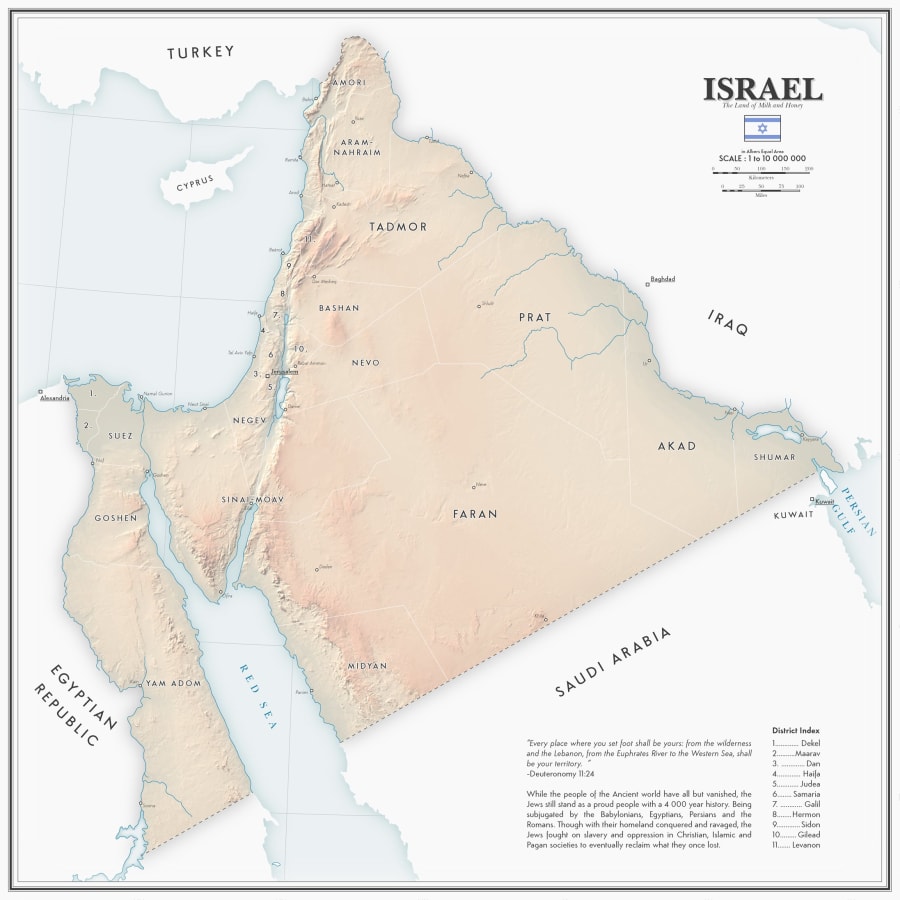
Is All Israel News’ faithful reporting important to you? Be part of it—help us continue by becoming a $5/month supporting partner.

J. Micah Hancock is a current Master’s student at the Hebrew University, pursuing a degree in Jewish History. Previously, he studied Biblical studies and journalism in his B.A. in the United States. He joined All Israel News as a reporter in 2022, and currently lives near Jerusalem with his wife and children.
You might also like to read this:


